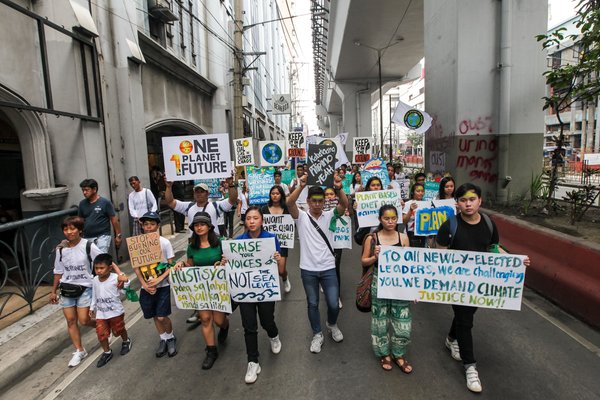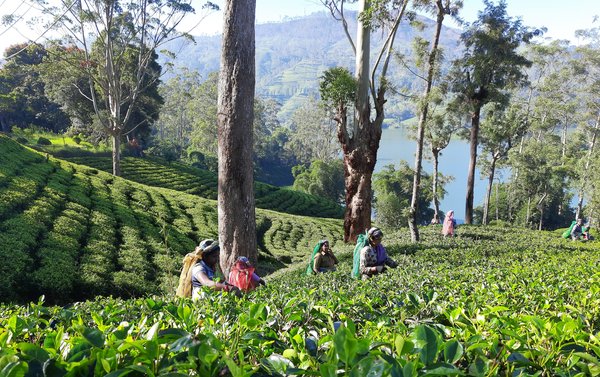
Backwaters in Kerala, India. Photo via Vinoth Chandar/Flickr. CC BY 2.0 DEED
This blog explores climate-induced migration, its complexities and impact on Kerala, India. The coastal region faces severe challenges, leading to increasing population displacement. While the Kerala government has initiated responses, a more comprehensive policy framework is needed to address the impending migration crisis effectively.
The blog was written by Neha Maria Benny of SPRF India, a think tank working to make research and public policy accessible and holistic, specifically for young people.
Climate-induced migration: an introduction
The global impact of human activities in creating climate change has sparked discussions on displacement and migration. The International Organization for Migration highlighted the role of environmental degradation in migration as early as 1992, with expectations of increased migration due to climate change.
Climate-induced migration refers to people moving because of sudden or gradual changes in climate. Migration is influenced by various factors, including economic, social, and political, and hence presents challenges in establishing a direct causal link with climate change. Consequently, environmental aspects remain underrepresented in mainstream migration theory. However, given their impact on urbanisation and cultural exchanges, it is essential to consider environmental factors in this context.
Migration induced by catastrophic climate events differs from economic migration because it happens quickly and people may have limited knowledge of their destination, and they may experience marginalisation at their migration destination. Its impact varies based on vulnerability, shaped by exposure, sensitivity, and adaptation capacity. Slow- onset climate change doesn't directly push people to move but can worsen existing problems, making it challenging for them to remain in their current locations.
Climate-induced migration triggers a cascade effect. Most people affected by climate disasters in rural areas move to cities, and the oversupply of urban labour lowers wages. Struggling communities may prompt households to consider migration as an option, potentially altering community dynamics and demographics. Migration can be a planned adaptation strategy or a last resort, depending on individual circumstances. The following section explores how Kerala, a state in India, is vulnerable to climate change, and how populations are migrating as a response.
Climate change migration in Kerala
The coastal stretch of Kerala, spanning 590 kilometres along the Arabian Sea, is densely populated. It faces high-impact events like rogue waves, storm surges, and tsunamis that cause extensive erosion, leading to land loss and population displacement. Kerala has experienced a series of natural disasters, including Cyclone Ockhi in 2017 and severe floods in 2018-2019.
Over the period between 2002-2012, approximately 500 hectares of Kerala’s coastal land was lost due to erosion, affecting around 79,000 people. By 2050, projections indicate that substantial areas in four districts, including Ernakulam, Kottayam, and Alappuzha, may find themselves below sea level, further increasing climate-induced migration. Kerala is highly susceptible to floods, with nearly 14.5% of the state's land area prone to flooding, some districts facing even higher risks, up to 50%. The state experienced its worst flood event in decades in 2018, exceeding the normal average precipitation by 42%, leading to over 410 fatalities and the displacement of thousands. Nearly 63% of Kerala's coastline is eroding, with Thiruvananthapuram district experiencing the highest erosion rates.
Migration patterns in Kerala
Munroe Island in Kerala represents a stark example of the first climate change migrants in the state. Rising sea levels have inundated homes during high tide periods, with nearly 39% of the island's land area already submerged by water. Over 800 families have abandoned their submerged properties, and the remaining residents face ongoing land subsidence, tidal flooding, and reduced agricultural productivity. Kuttanad, known for its backwaters and paddy cultivation, has also experienced more frequent and severe flooding in recent years. Fear of annual floods and rising sea levels has led to the abandonment of over 6,000 properties in the region. Climate change, along with poorly planned development, including tourism resorts and infrastructure on fragile reclaimed land, contributes to this crisis.
A recent study of five coastal districts in Kerala has revealed a two-phase migration pattern. Initially, people affected by climate change move away temporarily to find alternative places to live and then return to repair or rebuild their homes. As hazard events intensify, some residents migrate early because they see more risk or can't adapt. Other early migrants are those who lost their homes entirely and lack the means to rebuild or migrate. In the second phase, the government steps in, providing housing or land to those who lost their homes as part of recovery projects. As the impacts of climate change increase, many people in vulnerable coastal areas might have to move because of rising sea levels or extreme weather. Without good climate and development plans, many families might have to leave their state or even go farther to escape the problems caused by rising sea levels and coastal floods.
Policy responses and adaptation strategies
Kerala is one of the few states in India that has established the State Disaster Mitigation Fund and has clear administrative directives for its allocation. The government initiated the Punargeham (New House) Project, aimed at relocating families living within 50 metres of the shoreline to protect them from erosion. In December 2022, Kerala unveiled SAPCC 2.0 (State Action Plan on Climate Change 2.0) which mentions migration and how it could impact the economy. Surprisingly, it does not explicitly acknowledge this movement as a way to adapt to climate change or address it in the plans. Even though the state government is taking some actions to address climate change there is a lot more work ahead. The following are proposed policy changes needed in response to climate-induced migration:
- Comprehensive policy framework: To recognise various forms of climate-related migration and safeguards the rights of climate migrants, a comprehensive legal and policy plan should be part of the national climate change and disaster management strategies.
- Data and research: Invest in collecting data and conducting research to understand how climate-induced migration works, its patterns, and its effects for tailoring policy decisions.
- Vulnerable group identification and social security: To identify vulnerable groups among migrants, providing healthcare, education, and support for their livelihoods, and prioritise them in rehabilitation plans.
- Involving migrants in resettlement initiatives: Moving communities from high-risk areas must include the people affected in the process and incorporate their opinions and needs.
- Climate resilience measures: Proactive steps like building eco-friendly infrastructure and following building rules to reduce the need for people to move because of climate issues.
The Indian state of Kerala, vulnerable to climate change and facing an impending large-scale migration, is trying to deal with these issues with initiatives like the State Disaster Mitigation Fund and the Punargeham Project. But there is a need for comprehensive policy and legal frameworks, investing in data and research, helping vulnerable groups among migrants, getting ready for disasters and climate change, and managing coastal areas to stop sea-level rise. Kerala's experience with climate-induced migration can provide lessons for other similarly affected places on how to handle similar problems in our changing climate.



